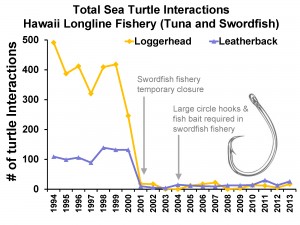July 14, 2016 — Hawaii’s longline fleet is about to hit its 3,554-ton limit for bigeye tuna in the Western and Central Pacific, prompting a closure date for the fishery of July 22, according to the National Oceanic and Atmospheric Administration.
The longliners had caught an estimated 98 percent of their annual quota by Wednesday, NOAA’s National Marine Fisheries Service reported. The feds had been predicting longliners would hit their bigeye tuna limit by Aug. 14.
But the closure will likely be short-lived thanks to a federal rule that proposes, like in years past, allowing U.S. Pacific Island territories — American Samoa, Guam and the Commonwealth of the Northern Mariana Islands — to each allocate up to 1,000 tons of their 2,000-ton quotas to U.S. longliners under a “specified fishing agreement.”
In April, the Hawaii Longline Association reached such an agreement with the Marianas that involves paying the territory $250,000 in each of the next three years for up to half of its quota. That’s $50,000 more than the association paid the territory last year.
The money is deposited into the Western Pacific Sustainable Fisheries Fund, which the territories use for fishery development projects approved by their respective governors, according to Western Pacific Regional Fishery Management Council spokeswoman Sylvia Spalding. These includes boat ramps, fish markets, processing facilities, training programs and loan programs.


